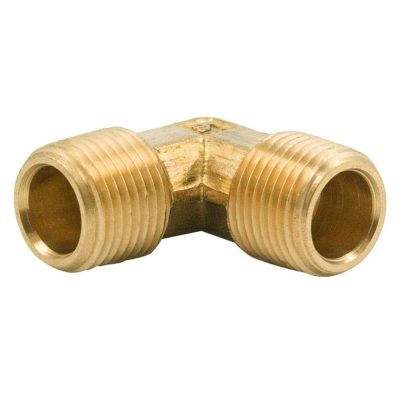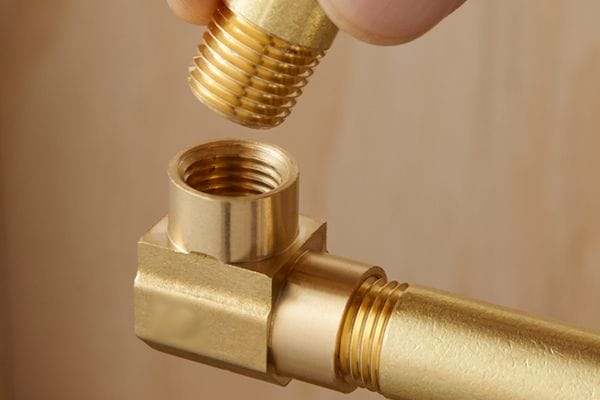Leaks in brass pipe fittings are a common issue faced by both industries and households. The consequences range from minor inconveniences to significant damage and costly repairs. Understanding how to prevent these leaks is crucial. This guide offers practical advice on avoiding brass pipe fitting leaks, and ensuring the longevity and reliability of your plumbing systems.
Brass pipe fittings are integral components in various plumbing systems, playing a crucial role in ensuring the proper functioning and reliability of these systems. Made primarily from an alloy of copper and zinc, brass pipe fittings are known for their excellent properties that make them highly suitable for both residential and industrial applications.

Brass pipe fittings are used to connect straight sections of pipe, adapt to different sizes or shapes, and regulate or measure fluid flow. They are essential for creating a seamless and leak-free plumbing system. These fittings come in a variety of shapes and sizes to meet different plumbing requirements, ensuring that fluid, gas, or steam can be transported efficiently and safely.
Elbows: These fittings are used to change the direction of flow between pipes. Elbows typically come in 90-degree and 45-degree angles and are essential for navigating complex piping routes.
Tees: T-shaped fittings that allow for the connection of three pipes. They are used to either combine or split fluid flow.
Couplings: These fittings are used to connect two pipes of the same or different diameters. Couplings are crucial for extending the length of pipes.
Adapters: Adapters are used to connect pipes of different types or sizes, ensuring compatibility within a plumbing system.
Bushings: These fittings are used to join pipes of different diameters and can also serve to reduce the size of a pipe.
Caps and Plugs: Caps are used to close the end of a pipe, while plugs are used to close off the end of fittings, preventing fluid flow.
Improper installation is a leading cause of leaks in brass pipe fittings. Even the highest-quality fittings can fail if not installed correctly. Key issues during installation include:
Proper training for installers and adherence to best practices can significantly reduce the risk of leaks due to poor installation.

Brass pipe fittings, like all mechanical components, are subject to wear and tear over time. Factors contributing to the degradation of brass fittings include:
Regular inspection is vital to identify early signs of wear, such as discoloration, surface pitting, or cracks. Replacing worn-out fittings before they fail can prevent leaks and the subsequent damage they cause.
Material defects are less common but can be a significant cause of leaks in brass pipe fittings. These defects can originate from:
A thorough inspection of fittings before installation can help identify obvious defects. Sourcing fittings from reputable manufacturers with stringent quality control processes can mitigate the risk of leaks due to material defects.
External factors that can influence the integrity of brass pipe fittings include:
To minimize the impact of these external factors, consider the following protective measures:
Proper installation is crucial to ensuring the longevity and reliability of brass pipe fittings. Here are some detailed steps and considerations to follow:
Use the Right Tools: Brass is a relatively soft metal, and using the wrong tools can easily damage it. Employ tools specifically designed for brass fittings, such as adjustable wrenches or pipe wrenches with smooth jaws, to avoid marring or deforming the fittings. Additionally, using tools like pipe threaders and reamers that are appropriately sized for brass can ensure precise and clean threads.
Ensure Correct Threading: Threading is a critical aspect of fitting installation. Incorrect threading can lead to leaks and joint failures. To ensure proper threading:
Apply Appropriate Torque: Over-tightening brass fittings can strip threads or even crack the fitting, while under-tightening can lead to leaks. It is essential to apply the correct amount of torque:
Regular maintenance and inspection are vital to catch early signs of wear and prevent leaks from developing into more significant issues. Here are some steps to ensure ongoing integrity:
Replacement:
Proactively replacing fittings that show signs of wear or damage can prevent leaks. Do not wait for a fitting to fail:
The quality of the brass fittings used in your system significantly impacts their performance and lifespan. Ensuring high standards in material selection is a crucial step in preventing leaks:
High-Quality Brass Fittings:
Reputable Suppliers:
Environmental factors can significantly impact the performance of brass fittings. Proper protective measures can mitigate these effects:
Protect from Extreme Conditions:
Stabilize Mechanical Stresses:
Effectively troubleshooting leaks in brass pipe fittings begins with accurately identifying the source of the problem. Here are the steps and tools you can use:

Once the source of the leak is identified, temporary fixes can be applied to manage the problem until a permanent solution is implemented. Here are some effective temporary fixes:
Sealants and Tapes:
For small leaks, pipe sealants, and tapes can provide a temporary seal:
Tightening Fittings:
If the leak is due to a fitting that has become loose over time:
In summary, preventing leaks in brass pipe fittings involves proper installation techniques, regular maintenance, and choosing high-quality materials from reputable suppliers. Ensuring correct threading, applying the right torque, and using appropriate tools are essential steps. Regular inspections and timely replacements, along with protecting fittings from extreme conditions and mechanical stresses, will enhance their longevity.
Common causes include poor installation, wear and tear, material defects, and external factors such as extreme temperatures and vibrations.
Use the correct tools, ensure proper threading and torque during installation, perform regular maintenance, and choose high-quality brass fittings from reputable suppliers.
Identify the source of the leak through visual inspection and leak detection tools. Apply temporary fixes such as sealants or Teflon tape and gently tighten the fittings if necessary.
Regular inspections should be scheduled based on the system’s usage and environmental conditions. A general recommendation is to inspect fittings at least once a year.
Yes, extreme temperatures, corrosive environments, and mechanical stresses can impact the integrity of brass pipe fittings. Protective measures such as insulation and secure mounting can help mitigate these effects.
Signs include visible leaks, discoloration, dampness, mineral deposits, and any noticeable wear or cracks in the fittings. Prompt replacement of damaged fittings is essential to prevent further issues.